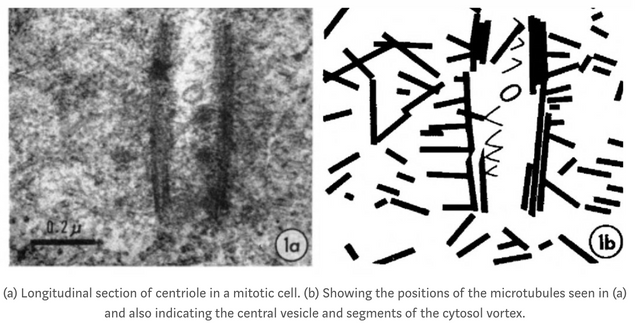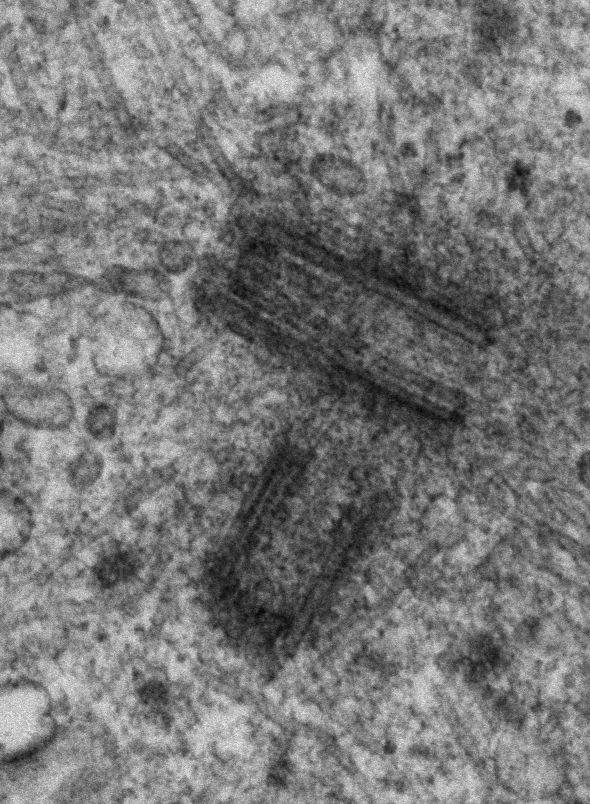Throwing this idea out there: are the centrioles in the centrosome orbiting one another?
Have no data for that, just an idea I had. If the centrioles do generate electromagnetic fields then as the centrosome is two centrioles, perhaps it would be natural for those two centrioles to be capable of forming some type of orbit, and if they are capable of doing so, perhaps they are actually orbiting one another rather than being "anchored" by whatever it is people believe they are anchored to one another by.

Not sure exactly how they would orbit one another, or wether or not the arrangement of mother and daughter centrioles in electron photographs shows any variation that is reminiscent of orbits, but what I have discovered is that there is a lot of detail overall around the centrosome and centrioles that is often not propagated, that people seem to miss overall, the helical structure of the 9 blades being one example[1, 2] which I've only seen in a few sources including a meme from this year[3], so there could be details as well for how the mother and daughter centriole tend to relate to one another.
What are some ways two cylinders of 500 nm * 250 nm could orbit one another?
A fish swinging its tail to left and right, or up and down, creates propulsion and moves forward, by riding its own wake, and as the helix centriole squeezes together and pumps water through it, each blade is acting like a fish tail stroke, and the centriole as a whole rides on the wake of the cytosol flux through the center, making it rotate.

Without an anchor, the contraction of the centriole would cause it to move forward, to swim more or less, and the electromagnetic field of the other centriole could act on the propelling centriole so that it bends its direction of movement towards the other centriole, gravitating by electromagnetic attraction, and if both centrioles of the centrosome are doing so at the same time, they would orbit one another, and adjust their motion to the moving electromagnetic field of the other (that moves because the centriole itself moves).
The two centrioles will lag behind one another, react to the one another, causing them to circle the edge of the other. The motion overall forms a spiral that has a directionality, but the spiral itself is rotating so the centrosome remains in the same place, the combined motions forming one single intracellular electromagnetic sphere, and the cell overall organizes around it.

An orbital model would explain where the force generated from the cytosol-pump goes, it a) creates rotation and b) propelling forward movement that from the two centrioles combined produces a gyroscope-like orbital system.
I think two centrosomes of a dividing cell form one sphere like electromagnetic field with a synchronized frequency, which is important for mitosis to occur.
Johan U just received a free resteem from @steemwhalepower please upvote this comment to help everyone who uses this service if you want me to remove this comment reply remove
send 0.100 sbd or steem for 2 upvotes and a resteem follow me for random Upvotes and resteems